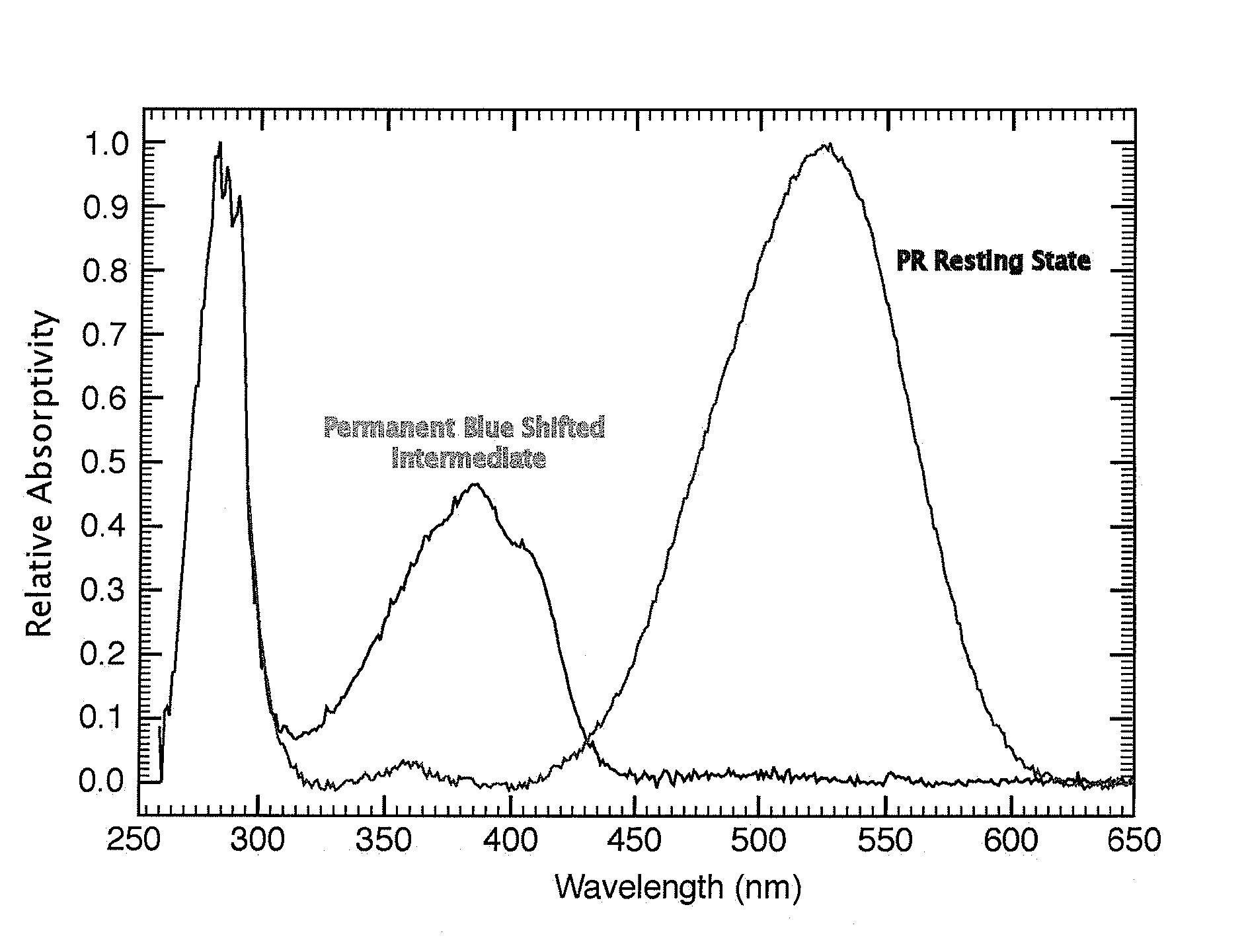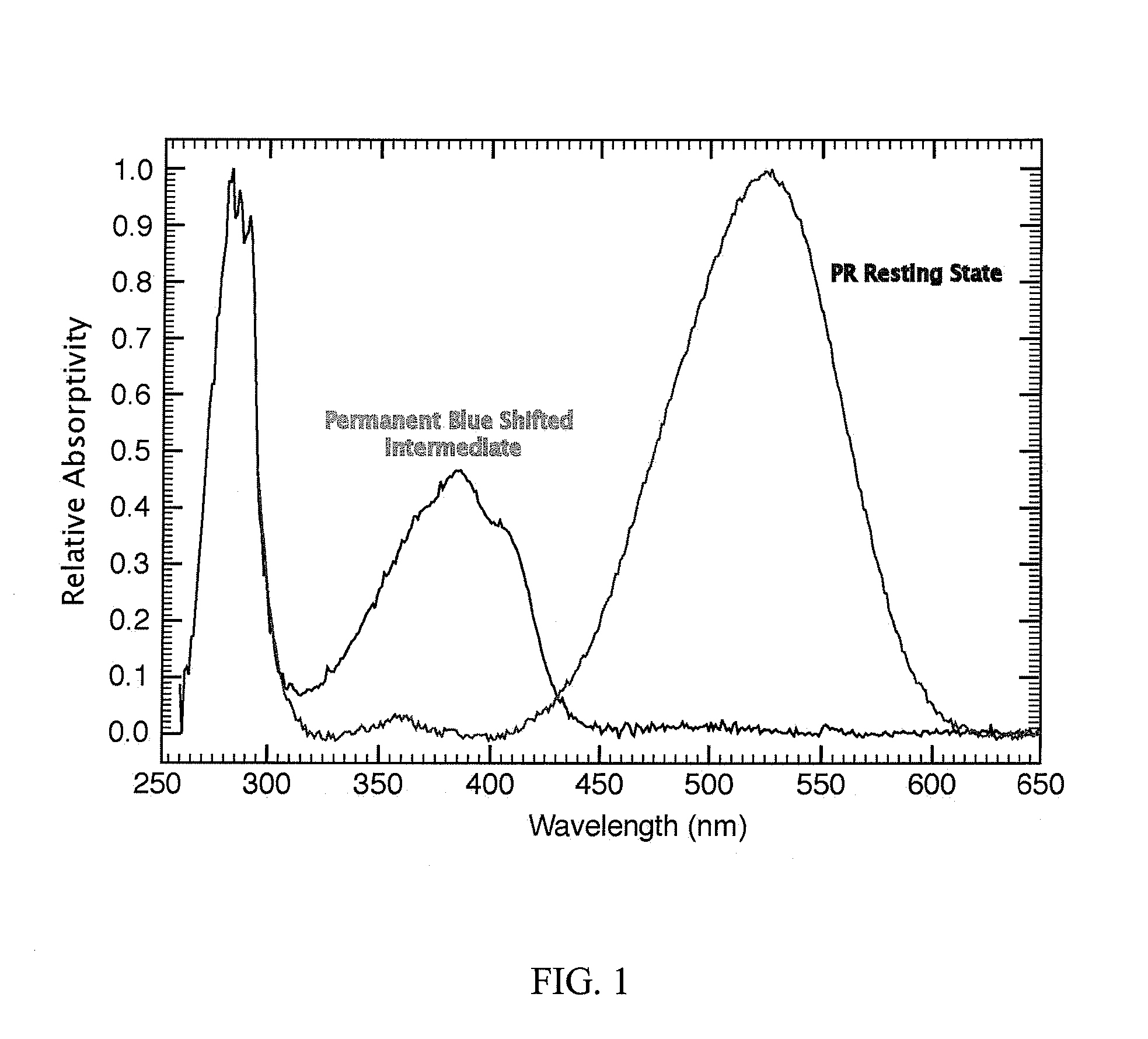Binary Optical Compound and Method of Manufacture
a technology of optical compounds and binaries, applied in the field of binary optical compounds, can solve the problems of poor efficiency of br to q transition and limited comparison between these two protein families, and achieve the effect of efficient transitional properties and easy preparation
- Summary
- Abstract
- Description
- Claims
- Application Information
AI Technical Summary
Benefits of technology
Problems solved by technology
Method used
Image
Examples
Embodiment Construction
[0016] Referring now to the drawings, wherein like numerals refer to like parts throughout, an embodiment of the present invention comprises a binary optical compound formed from a preparation of proteorhodopsin. Like bacteriorhodopsin, proteorhodopsin has a state that may be used for protein-based holography and optical memory applications (to be referred to herein as the blue-shifted intermediate, or BSI). This state may be produced under certain conditions in both the blue and green forms of the protein. Furthermore, this state is expected to be produced similarly by the many PR variants that are described in the literature. Like a BR Q-state, the PR BSI is blue-shifted to a wavelength less than 400 nm (˜390 nm), has proven to be extremely long-lived under the appropriate experimental conditions (>24 hours), and can be reversibly driven back to the pR resting state. However, unlike the BR Q-state, the PR BSI can be produced with much higher efficiency. In wild-type bacteriorhodop...
PUM
| Property | Measurement | Unit |
|---|---|---|
| Nanoscale particle size | aaaaa | aaaaa |
| Nanoscale particle size | aaaaa | aaaaa |
| Nanoscale particle size | aaaaa | aaaaa |
Abstract
Description
Claims
Application Information
 Login to View More
Login to View More - R&D
- Intellectual Property
- Life Sciences
- Materials
- Tech Scout
- Unparalleled Data Quality
- Higher Quality Content
- 60% Fewer Hallucinations
Browse by: Latest US Patents, China's latest patents, Technical Efficacy Thesaurus, Application Domain, Technology Topic, Popular Technical Reports.
© 2025 PatSnap. All rights reserved.Legal|Privacy policy|Modern Slavery Act Transparency Statement|Sitemap|About US| Contact US: help@patsnap.com


